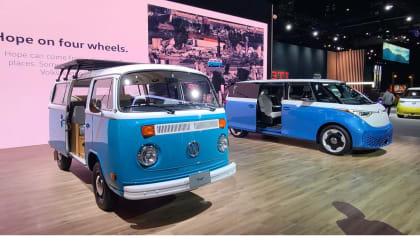Chevy’s Bolt EV: 10 things to know about the first long-range, affordable electric car
Published on Sat, Jul 14, 2018
By: Roy Nakano
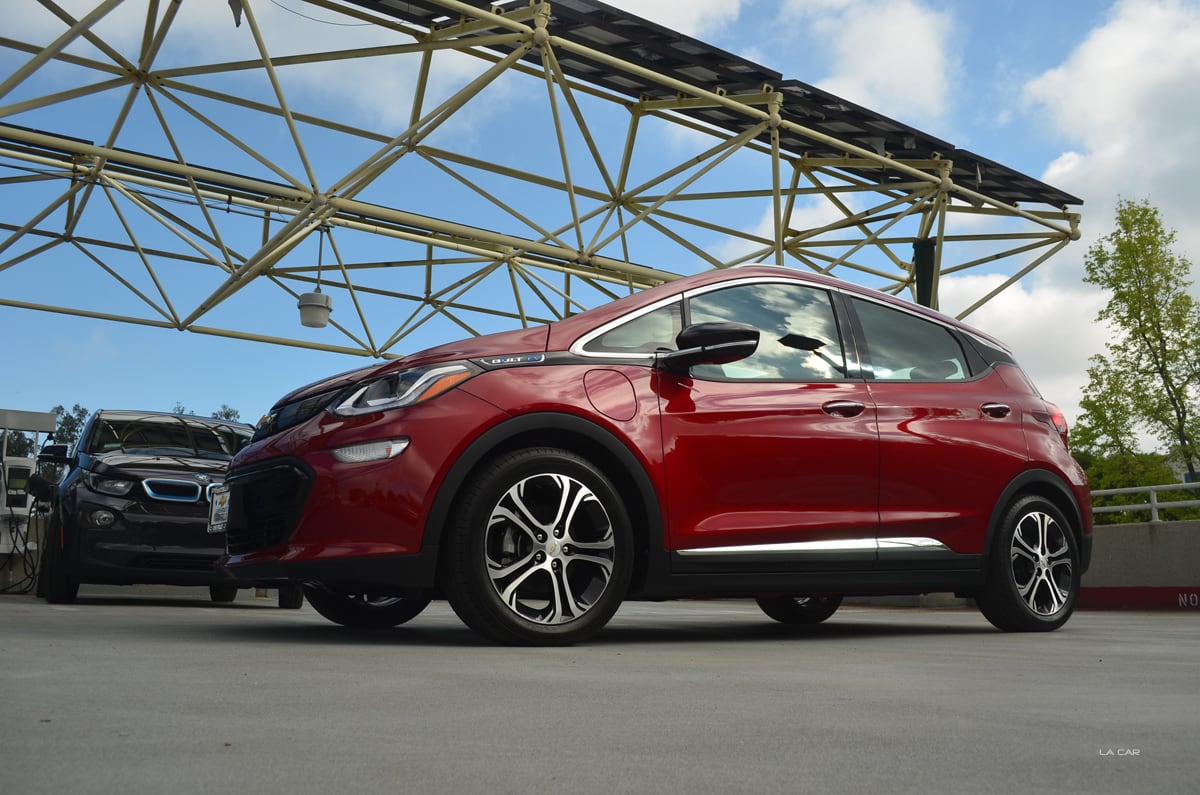
It’s been almost two years since the all-electric Chevrolet Bolt EV yanked the mantle from the Tesla Model 3 as the first affordable long-range electric car stage. While the $35,000 version of the Model 3 finally arrived, delivery is still a pretty elusive.
The Bolt EV took the electric car manufacturers by surprise. None, probably, more so than Nissan, who just introduced its second-generation Leaf, falling about 88 miles short of the Bolt in the range department (Nissan just released its long-promised update of the Left that exceeds 200 miles, but it still falls a bit short of the Bolt).
Hyundai introduced the Kona EV. With a range of 258 miles, it is every bit a match for the Bolt EV. Alas, they appear to be in very short supply, and dealers have been adding outrageous mark-ups to the car. Would you believe $4,500 to $7,000 above MSRP?
Having lived with the Bolt EV for over a year, I can tell you that’s not a bad thing. This household has owned five electrified vehicles, and driven many more—and the Bolt EV is the most refined and best-built of them all. Moreover, its quick, utterly silent acceleration and responsive steering make it a fun drive—particular in Sport mode and switching to one-pedal driving.
Chevy has been boasting in commercials about how it’s the most awarded car company. A large chunk of that claim is attributable to the Bolt. It won virtually all the Car of the Year (COTY) awards last year. Google “Bolt EV” and “game changer”, and you’ll see all the accolades the automotive press has bestowed on this car. We’ll skip that in favor of 10 things we think you’ll want to know about the Bolt EV, the only affordable, long-range electric propulsion vehicle at the moment:
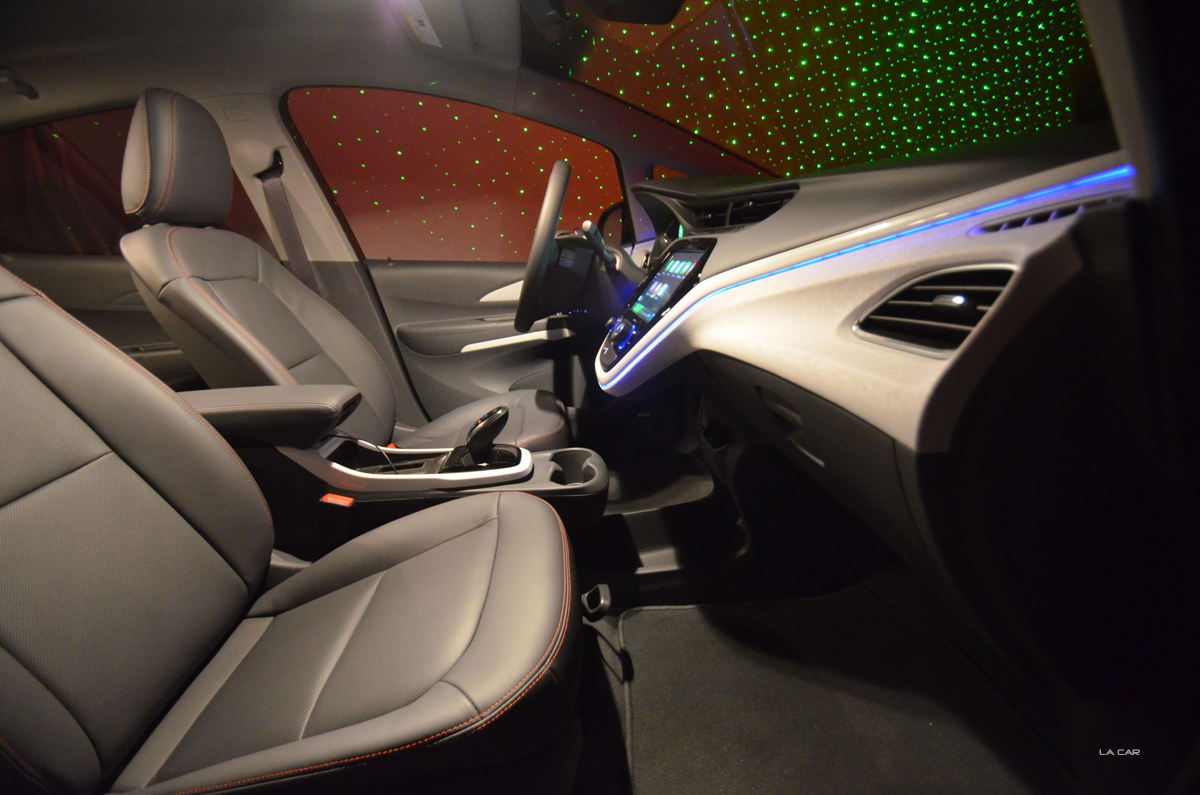
1. Come on in, have a seat
Before you do anything, you’ll want to see how you fit in the front seat of the Bolt. That’s because a vocal number of Bolt owners complain that the front seat is too narrow or doesn’t provide enough bottom cushion in the hip area. An equally vocal number of owners find absolutely nothing wrong with the seats. You’ll want to know which club you belong to. My club membership seems to vacillate, depending on whether I’m carrying a wallet or two in the back pockets. If you’re okay with your wallet up front, you’re probably okay sitting in the Bolt.
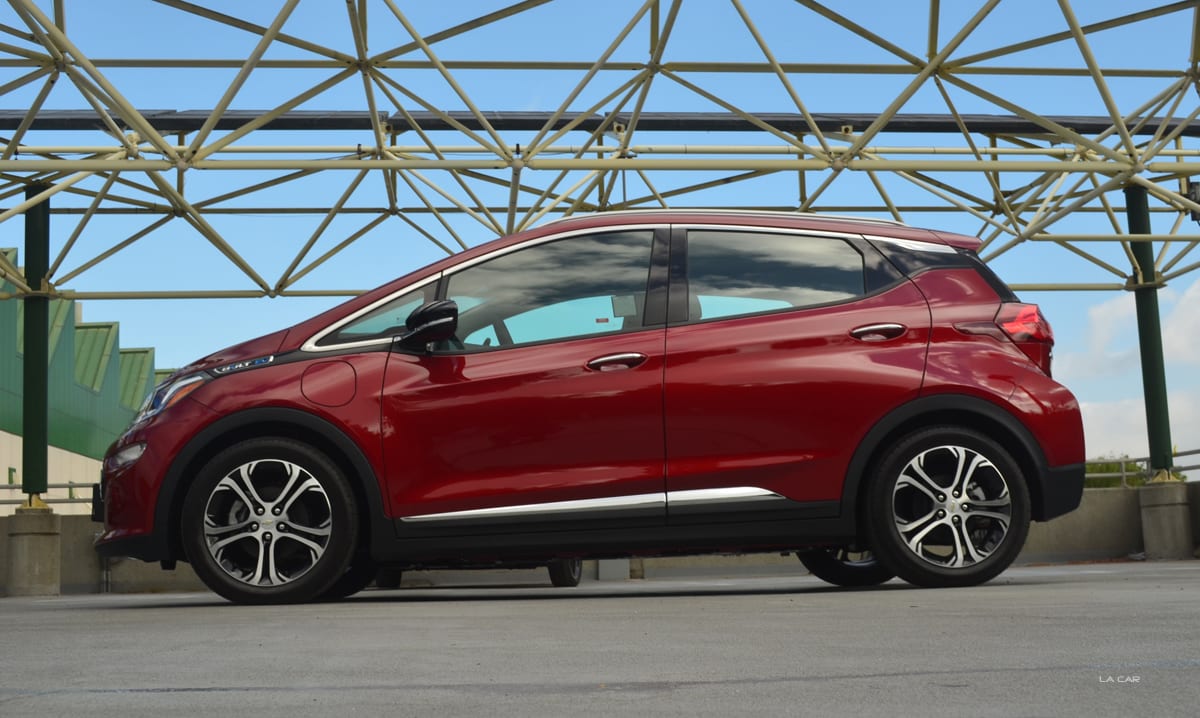
2. What’s new pussycat?
For those of you hoping that Chevrolet put some cushier seats in the new Bolt, there’s no such luck. The number of changes for 2018 (from 2017) can be counted on a cat’s paw: The heated steering wheel is tweaked to be thermostatically controlled. Chevy nixed the map pocket on the back of the front passenger seat from the intermediate 2LT trim level. Midstream in 2018, Chevy fitted sliding sun visors. Wireless charging extends to certain iPhone models in the Premier package. And last, but not least, there’s a slight price break—from $37,495 to $36,620.
Looking ahead into model year 2019, the Bolt loses two of its nicest colors (Arctic Blue Metallic and Orange Burst Metallic) while gaining three (Green Mist, Metallic
Shock, and Slate Gray Metallic). Arriving later in the model year will be a new smartphone interface for vehicle entry, start and operation for fleet orders. 2019 also adds Tire Fill Alert, and the Driver Confidence II Package (Low Speed Forward Automatic Braking, Lane Keep Assist with Lane Departure Warning, Forward Collision Alert, Following Distance Indicator, Front Pedestrian Braking and IntelliBeam) will be available on the base LT model. No word as to whether cushier front seats will make the grade in 2019.
Read more from GM Authority on the subject.
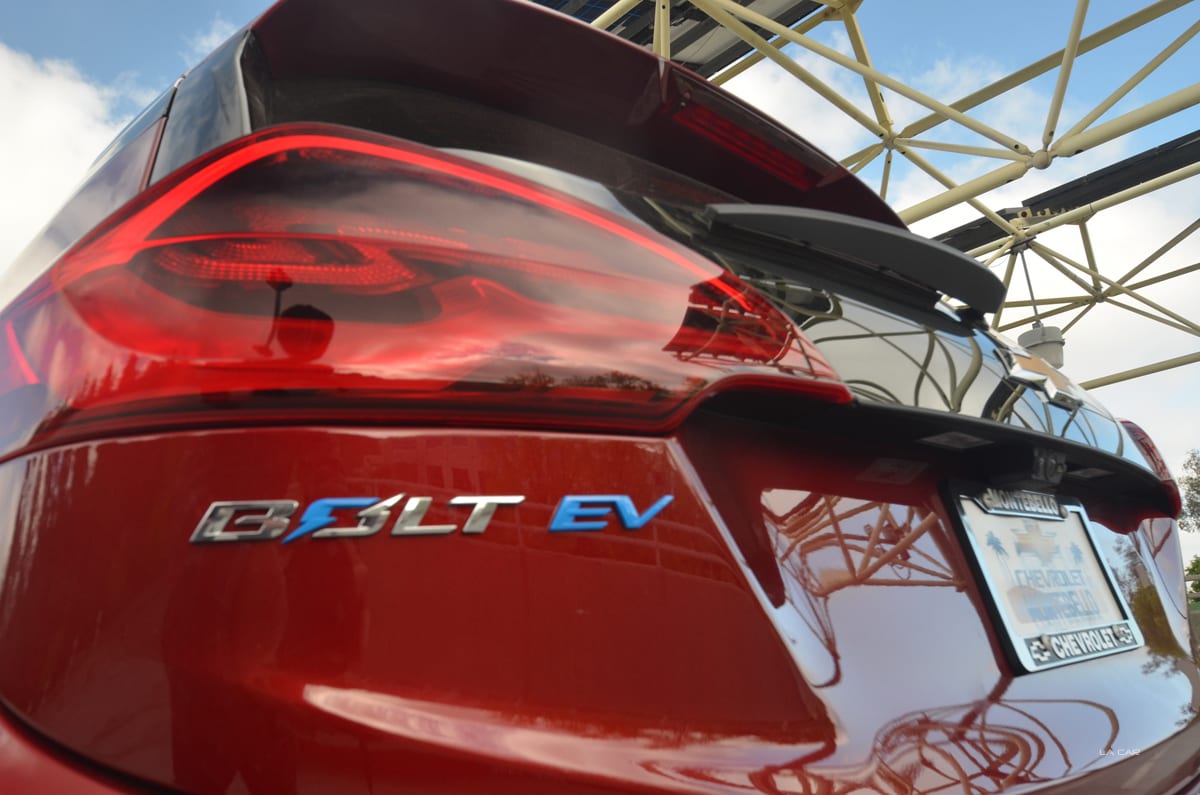
3. You can get a killer deal on a Bolt EV
Much to the dismay of Chevrolet, the new Bolt EV is not selling all that well. Cheap gas prices may be the main culprit. In any event, the car hasn’t been good for dealers that like to gouge the public with “marketing adjustment” sticker prices above the manufacturer suggested retail price (MSRP). Consequently, you can get a killer deal on a new Bolt. In So Cal, look for a car dealer that’s either on the Southern California Automobile Club, Costco or TrueCar referral list. Better yet, look for a dealer that’s on all three lists. This trifecta will yield a price that’s below dealer invoice—i.e., considerably less than the MSRP.
As good as the purchase deals are, GM is not presently matching the deals on its Bolt EV leases. We hope this will change, given the soft sales of the Bolt. In the meantime, you can get a great lease deal on a Volt (the Volt, not the Bolt).
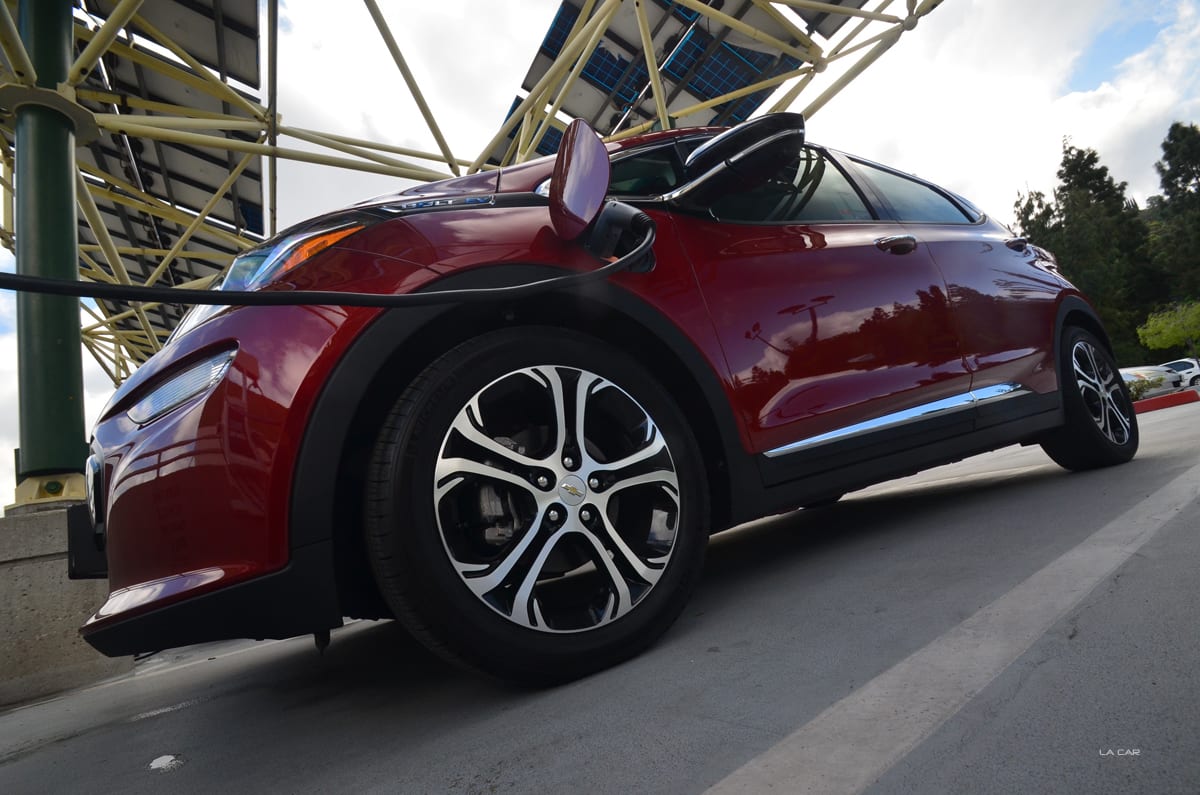
4. The base model is the bargain
The base models of cars are usually the best bargains. You get to enjoy the basic goodness of the car without paying for the frills. It’s the case with the $36,620 base Bolt EV LT ($29,120 after the Federal tax credit). You get you the same 238 mile EPA-rated range, Apple CarPlay (“Hey Siri, take us home”) and Android Auto (“Okay Google, I’m hungry”) as the more upscale Premier edition. You get the same 266 pound-feet of torque electric motor that’ll propel you from zero to 60 mph in less than 6.5 seconds. And you get the same sport mode, one-pedal driving mode, and Regen-on-Demand paddle shifter that will scoot you around corners and around town with the greatest of ease. The base model comes with a perky-looking two-tone cloth interior. Alas, one of the tones is off-white, and that might require a bit more elbow grease to keep clean.
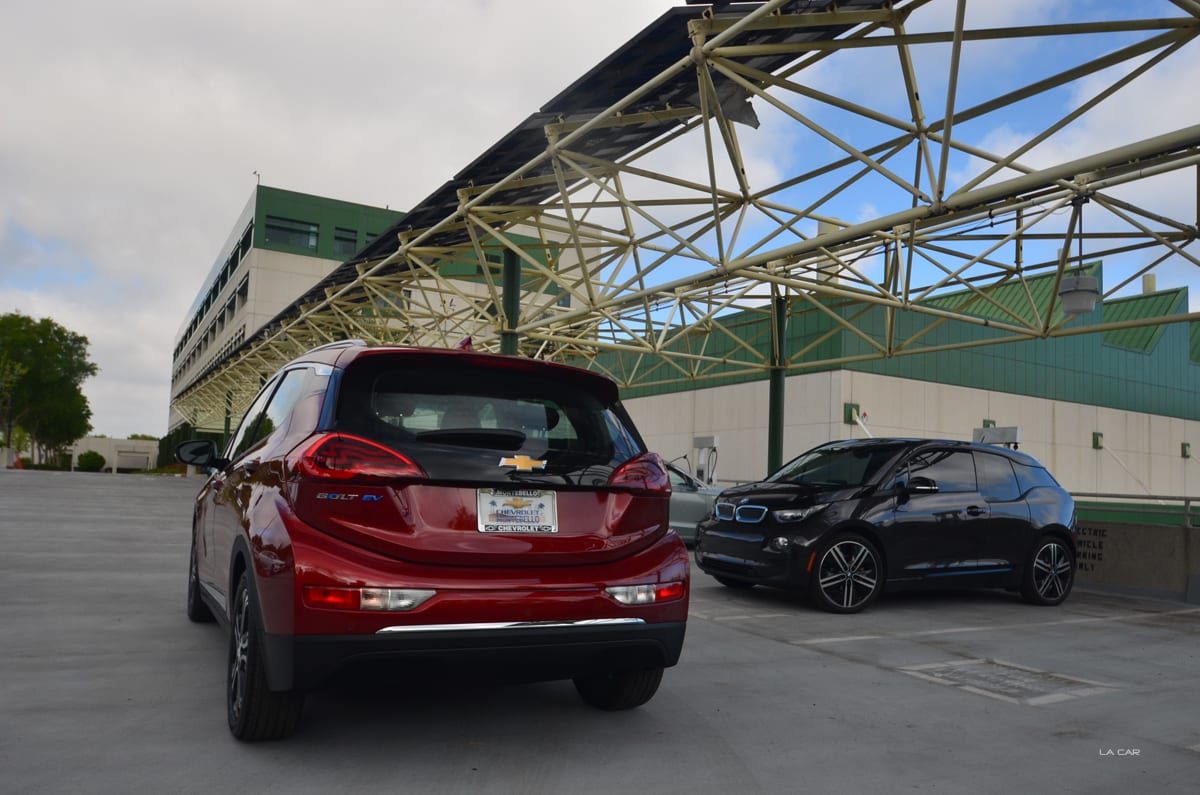
5. The state rebate and resale value might justify the bells and whistles version
To get the most dirt-resistant interior, you’d have to opt for the Premier edition with the Dark Galvanized Gray leather seat trim. At an additional four grand, the Premier is a hard pill to swallow. If you live in California, it’s a little easier to do so, since most buyers still qualify under the state’s $2,500 cash rebate program (see California Clean Vehicle Rebate Project). From there, the remaining difference can be justified by the Premier’s added resale value, not to mention the leather-appointed front and rear heated seats, heated steering wheel, side blind zone alert, rear cross traffic alert, bird’s eye view parking assist (Surround Vision), ambient lighting, and that enchanted rearview mirror (more on this later).
Our review model had just about every bell and whistle you can order on the Bolt, including the Infotainment Package (Bose sound system, wireless charging for phones equipped with it, four USB ports), the previously mentioned Driver Confidence Package II (the Premier comes with Package I) and DC fast charging capability.
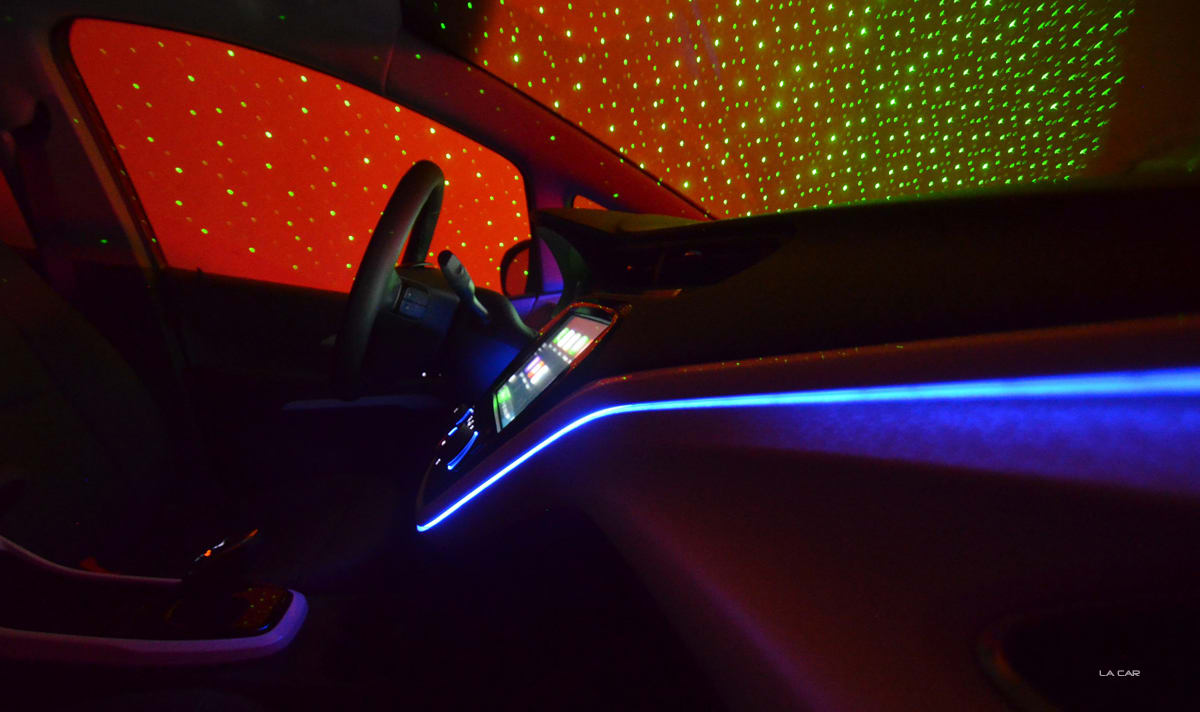
6. Mirror, mirror, on the windshield
Disney, Queen Grimhilde, and Belle don’t have a lock on The Enchanted Mirror. Belle and company have to share that distinction with the Bolt. For its Premier package, Chevy fits the Bolt with five cameras to help mitigate your potential fender benders. One of the rear cameras is used to support the Premier’s rearview television monitor. Flip the lever on the rearview mirror, and it turns into a high definition TV screen. Like the Enchanted Mirror in “Beauty in the Beast”, the mirror in the Bolt provides you with a view of the outside world—in this case, it’s the rear view without the obstruction of rear seat headrests and heads, and without the C pillars blocking your vision. Chevy says the Rear Camera Mirror improves rearward vision by 300 percent.
Brand stable mate Cadillac was the first to offer this feature. And it’s not a perfect solution. Some farsighted journalists are annoyed by the split second it takes their eyes to re-focus from the road to the mirror (younger eyes and those with monovision-corrected lenses fare better in this regard). The feature works well during the day and most of the night (brightness can be adjusted), but at certain hours, you’re better off flipping the mirror back to normal mode.
7. DC fast charging isn’t always that fast
For $750, you can equip the Bolt EV with Level 3 DC fast charging. The feature will allow you to charge up 90 miles in 30 minutes. That’s a great feature, but Level 3 DC charging stations are still few and far between. You really have to be an adventurer to want to plot out a long-range trip in a Bolt. Plus, there’ll be no guarantee that someone with an i3 or another Bolt won’t already be using the Level 3 DC charger when you get there. You might want to save that $750, and put it towards the cost of a renting a gas-propelled car for your long-range trips.
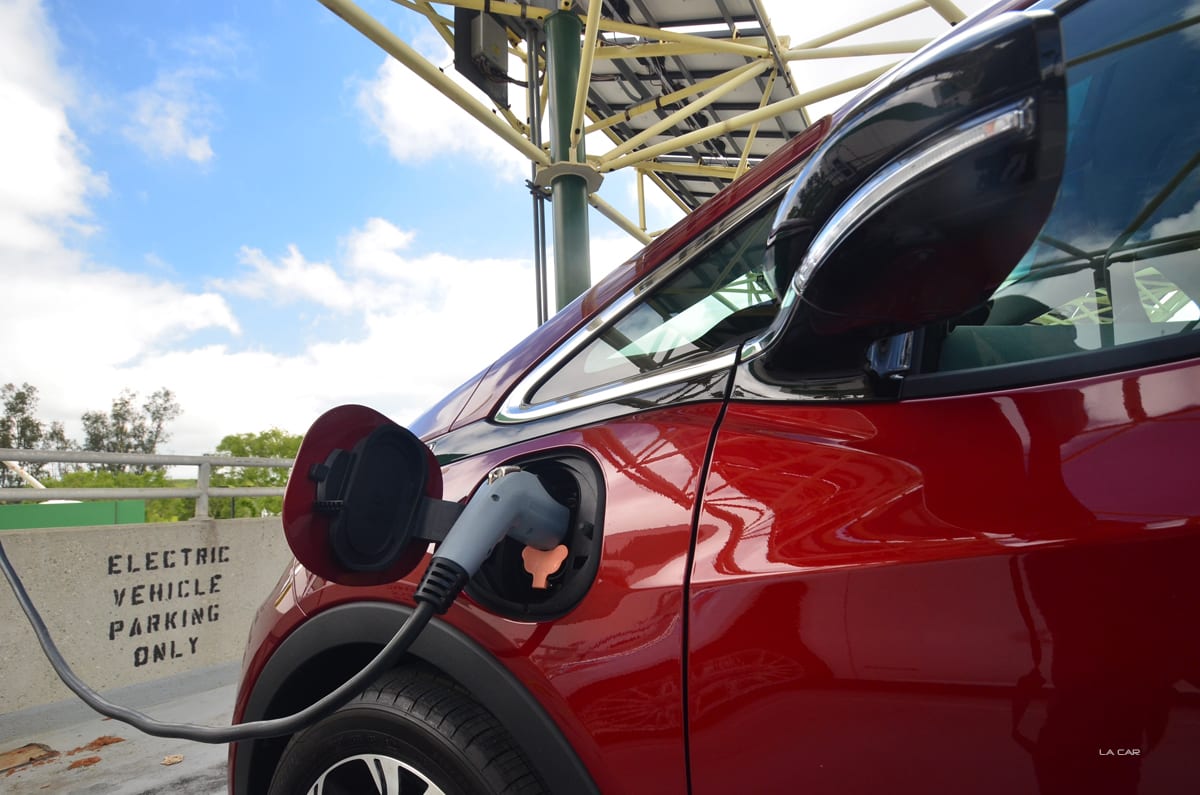
8. You don’t have to go with the GM-partnered 240v EVSE charger
General Motors has named AeroVironment’s EVSE-RS as the official charging station accessory for the Bolt EV. It’s a smart-looking 32-amp Level 2 electric vehicle servicing equipment (EVSE) charger. But, you need not be wedded to this particular model. It’s not the most revered EVSE company around. That distinction arguably goes to ClipperCreek, whose models look decidedly less sexy. ClipperCreek has a reputation for durability among EV aficionados. The HSC-40P 32 Amp Level 2 (240 volt) EVSE with its NEMA 14-50 plug and 25 foot cable is attractively priced at $589, but there are other popular choices to consider as well (see Buying Your First Home EV Charger ).
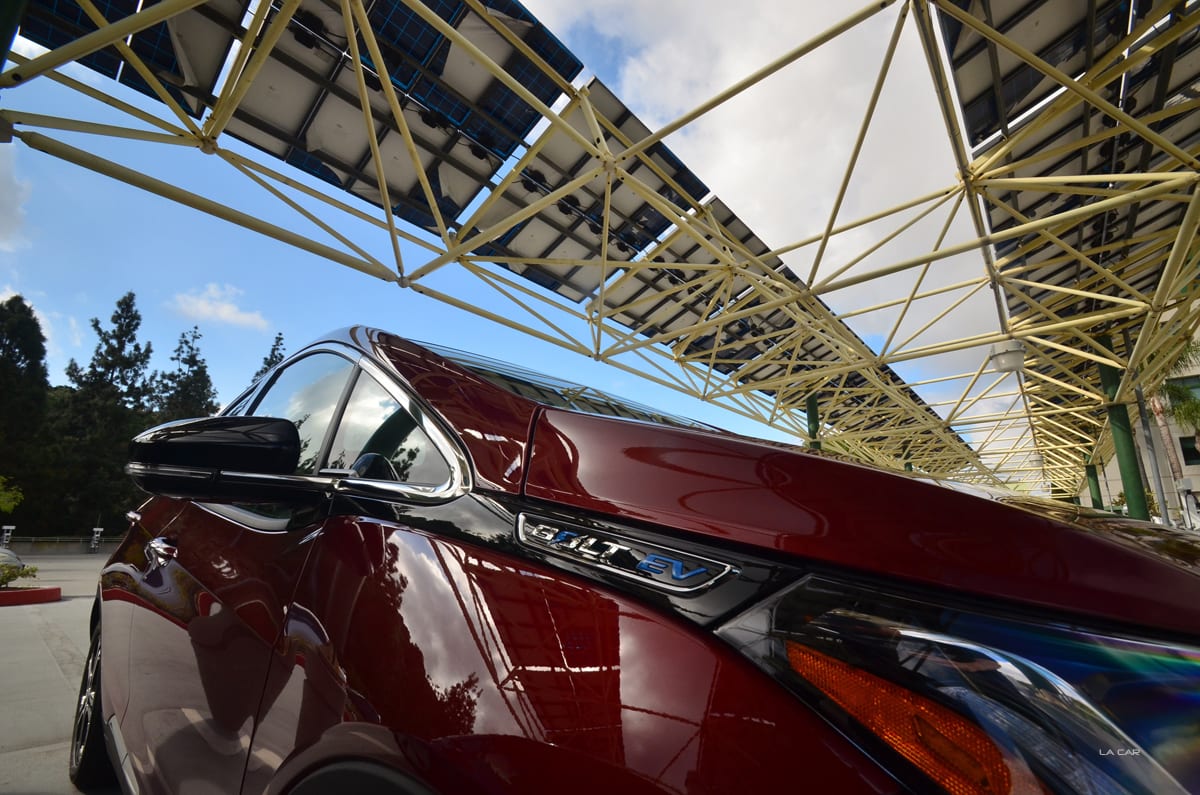
9. Range matters
If you’ve been living with any electric cars other than a Tesla, the Bolt will change the way you drive. Suddenly, going to that restaurant on the other side of the city is back on the option list. You won’t care so much about whether the car is fully charged. You can even skip the charging routine an evening or two. In short, the Bolt has pretty much rendered the other pure electric vehicles in its price class obsolete. Unless those other electric car manufacturers are ready to damn near give their cars away, there’s little reason to keep from crossing them off your list (well, in the case of the 500e, some Fiat dealers are damn near giving them away with reports of $69 monthly lease rates). As for the claimed EPA rating of 238 miles, it appears to be grounded in reality. We did a run from Monrovia to Santa Ana in the Bolt EV, and the range gauge said we still had 234 miles left, based on the style of driving just performed. It’s a brand new day.
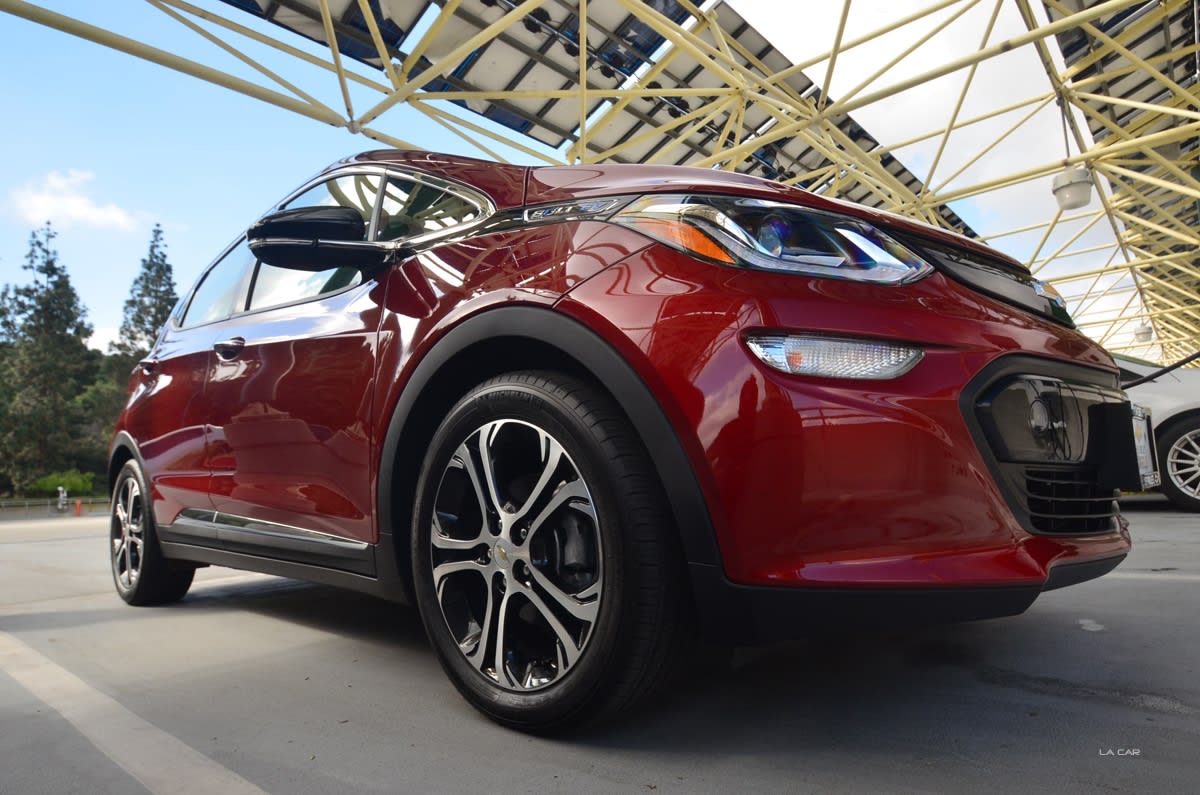
10. Should you wait for the Tesla Model 3?
No one will argue that the Chevrolet Bolt has the cachet of a Tesla. One look at the high stock value of Tesla versus that of General Motors is a sobering reminder of that. For that matter, one look at the Bolt itself versus the anticipated $35,000 Tesla Model 3 should put the nail on the cachet coffin. The Model 3 is a sleek, shrunken Tesla Model S, versus the Bolt’s shrunken minivan proportions.
On the other hand, Chevrolet is an established car company, with a dealer network to back up its products in the service department. As a brand, Chevy’s predicted reliability is pretty respectable, if one goes by the Consumer Reports (CR) surveys. By contrast, Tesla has had teething problems with every model it’s introduced. CR, an early proponent of the Tesla Model S, had to remove its recommendation of the car due to reports of ongoing repair problems. With low-volume cars like the Model S and X, Tesla can handle the repairs. One wonders if it can do the same with a mass market, anticipated high-volume car like the Model 3.
If you mind rolling the dice about the future of Tesla, then maybe waiting for the Tesla Model 3 is for you. So, you can wait for the Tesla Model 3. Or you can go to a Chevrolet dealer now and get electric propulsion in an affordable car with a 238-mile range.
LACar’s Glenn Oyoung compares the Bolt EV to the Volkswagen GTI on an autocross course. No, it’s not a joke. You can read about it here.
THE MAIN INGREDIENTS
Name of vehicle:
2018 Chevrolet Bolt EV
Price:
$36,620/$26,620 (base LT/with federal and CA incentives)
$40,905/$30,905 (Premier edition/with federal and CA incentives)
See information about the federal tax credit here
See information about state incentives here
EPA range rating on a single charge:
238 miles
Charging speeds:
90 miles in 30 minutes with a Level 3 DC fast-charging EVSE
32 miles in 60 minutes with a 32 amp Level 2 EVSE charger
Approximately 9 hours from zero to full capacity with a Level 2 EVSE charger
Approximately 2 days from zero to full capacity with 110/120-volt house current
Electric motor performance:
200 horsepower
266 pound-feet of torque
Transmission:
Electronic single-speed, with Regen-on-Demand paddle shifter and available one-pedal driving mode
Drive configuration:
Front motor, front-wheel drive
Battery configuration:
60 kWh lithium ion pack mounted below the passenger floor
EPA size classification*:
Small station wagon
- Passenger car classes are designated by the EPA based on interior volume index or seating capacity, except the ones classified as special vehicle. A two-seater is classified as a car with no more than two designated seating positions.
